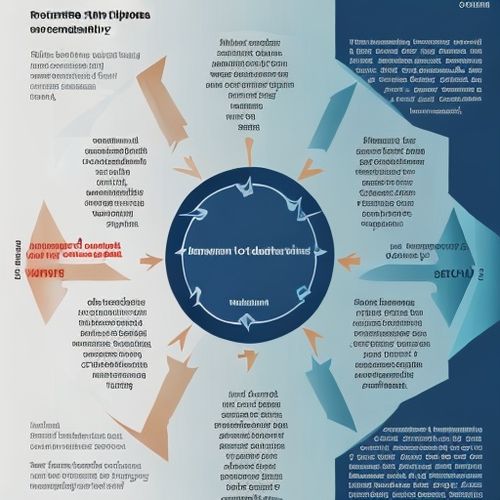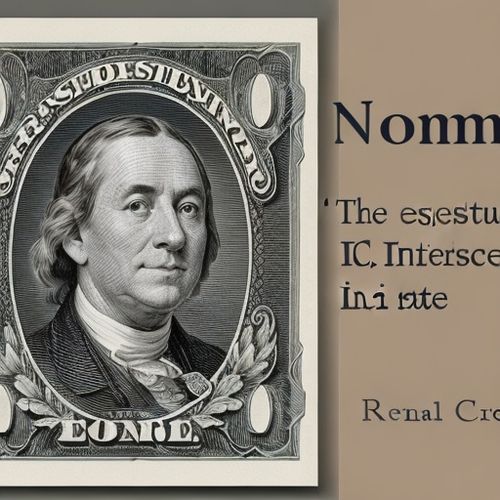In the world of investing, two primary schools of thought dominate the decision-making process: technical analysis and fundamental analysis. Both approaches aim to predict future price movements, but they do so in vastly different ways. Investors often debate which method is superior, but the truth is that each has its strengths and weaknesses depending on the market conditions, time horizon, and individual preferences.
Technical analysis revolves around the study of historical price and volume data to identify patterns and trends. Practitioners of this method believe that all relevant information is already reflected in the price, making it unnecessary to look at external factors. Charts become the bible for technical analysts, who use various indicators like moving averages, relative strength index (RSI), and Bollinger Bands to make trading decisions. The appeal of technical analysis lies in its simplicity and immediate applicability. Traders can quickly assess market sentiment and make short-term trades without delving into complex financial statements.
However, critics argue that technical analysis suffers from a self-fulfilling prophecy problem. When enough traders follow the same patterns and indicators, their collective actions can indeed move prices in the predicted direction, regardless of the underlying fundamentals. This creates situations where markets appear to move based on technical levels rather than economic realities. Another limitation is that technical analysis often fails during periods of low liquidity or when unexpected news shocks the market, as historical patterns become less reliable under such conditions.
Fundamental analysis takes a completely different approach by examining the intrinsic value of an asset. For stocks, this means analyzing financial statements, management quality, industry position, and macroeconomic factors. Fundamental analysts believe that markets may misprice assets in the short term but will eventually recognize their true value. This method is particularly popular among long-term investors who seek to buy undervalued securities and hold them until the market corrects its pricing error.
The strength of fundamental analysis lies in its comprehensive evaluation of a company's health and growth prospects. By understanding the qualitative and quantitative aspects of a business, investors can make more informed decisions about its long-term potential. However, fundamental analysis requires significant time and expertise to perform correctly. Interpreting financial statements, understanding industry dynamics, and staying updated with macroeconomic trends demand substantial effort. Moreover, the market can remain irrational longer than a fundamental investor can remain solvent, as the famous saying goes.
Market conditions often dictate which approach works better. In trending markets with clear momentum, technical analysis tends to outperform as price movements follow predictable patterns. During such periods, fundamental factors may take a backseat to market psychology and herd behavior. Conversely, in range-bound or volatile markets where prices fluctuate without clear direction, fundamental analysis provides a more stable framework for decision-making. The intrinsic value calculated through fundamental analysis serves as an anchor, preventing investors from getting swayed by short-term noise.
The time horizon of the investor plays a crucial role in determining the appropriate strategy. Day traders and short-term speculators naturally gravitate toward technical analysis because it provides actionable signals for quick trades. The ability to identify support and resistance levels or spot chart patterns helps them capitalize on small price movements. On the other hand, institutional investors and those with longer investment horizons typically prefer fundamental analysis. Building a portfolio based on company fundamentals allows for more stable, long-term growth that isn't disrupted by short-term market fluctuations.
Interestingly, many successful investors combine elements of both approaches to create a more robust strategy. They might use fundamental analysis to select undervalued stocks and then employ technical analysis to determine optimal entry and exit points. This hybrid approach acknowledges that while fundamentals determine long-term value, market psychology and technical factors influence short-term price movements. The combination allows investors to benefit from both valuation discrepancies and timing advantages.
Technology has significantly impacted how both analyses are conducted. The rise of powerful computing has enabled complex algorithmic trading based on technical indicators, while big data analytics has enhanced fundamental research capabilities. Artificial intelligence now helps identify patterns too subtle for human analysts to detect in both price charts and financial statements. These technological advancements have made both approaches more sophisticated but have also increased market efficiency, making consistent outperformance more challenging.
Psychological factors play an underappreciated role in the effectiveness of each method. Technical analysis often appeals to traders who prefer clear rules and visual patterns, while fundamental analysis attracts those who enjoy deep research and abstract thinking. The chosen method must align with the investor's personality and cognitive style to be effective. Attempting to use a strategy that doesn't match one's natural inclinations often leads to poor discipline and inconsistent application.
Market efficiency theories suggest that in highly efficient markets, neither technical nor fundamental analysis can consistently outperform because all available information is already reflected in prices. However, markets frequently display inefficiencies, especially in less liquid securities or during periods of rapid change. These inefficiencies create opportunities for both technical traders to profit from patterns and fundamental investors to capitalize on mispricings. The ongoing debate between the two approaches reflects the dynamic nature of financial markets where no single method works perfectly in all conditions.
Ultimately, the choice between technical and fundamental analysis depends on individual goals, resources, and temperament. Short-term traders will likely find more value in technical tools, while long-term investors may prefer fundamental research. Many find that understanding both approaches makes them more versatile investors, able to adapt to changing market environments. Rather than viewing them as competing methodologies, savvy market participants recognize that technical and fundamental analyses offer complementary perspectives on the complex puzzle of price movements.

By Noah Bell/Apr 10, 2025

By Victoria Gonzalez/Apr 10, 2025

By John Smith/Apr 10, 2025

By Sarah Davis/Apr 10, 2025

By James Moore/Apr 10, 2025

By John Smith/Apr 10, 2025

By Ryan Martin/Apr 10, 2025

By Benjamin Evans/Apr 10, 2025

By Emma Thompson/Apr 10, 2025

By Megan Clark/Apr 10, 2025

By Thomas Roberts/Apr 10, 2025

By Noah Bell/Apr 10, 2025

By George Bailey/Apr 10, 2025

By Daniel Scott/Apr 10, 2025

By Benjamin Evans/Apr 10, 2025

By Amanda Phillips/Apr 10, 2025

By Sophia Lewis/Apr 10, 2025